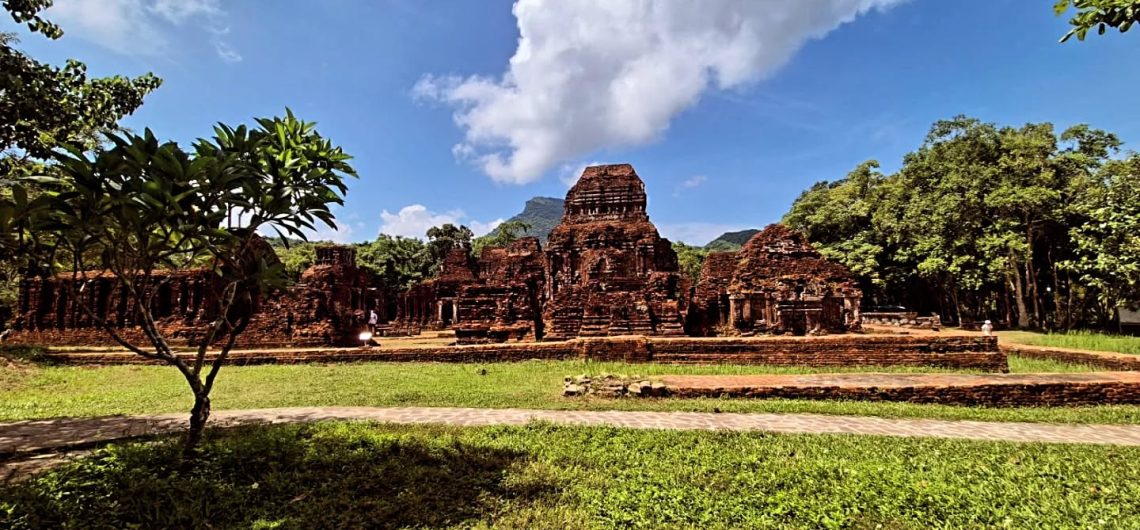Plan your visit to My Son Sanctuary with this travel guide. Learn about its history, best time to visit, entrance fees, and must-see Cham towers in Quảng Nam.
My Son Sanctuary is one of Vietnam’s most remarkable cultural treasures. Nestled in a peaceful valley surrounded by lush mountains in Quảng Nam Province, this UNESCO World Heritage Site invites travelers to step back in time and witness the spiritual and architectural achievements of the Champa Kingdom. If you are planning a trip to central Vietnam, a visit to My Son Sanctuary offers an extraordinary blend of history, architecture, culture, and natural beauty.
Location: Where Is My Son Sanctuary?
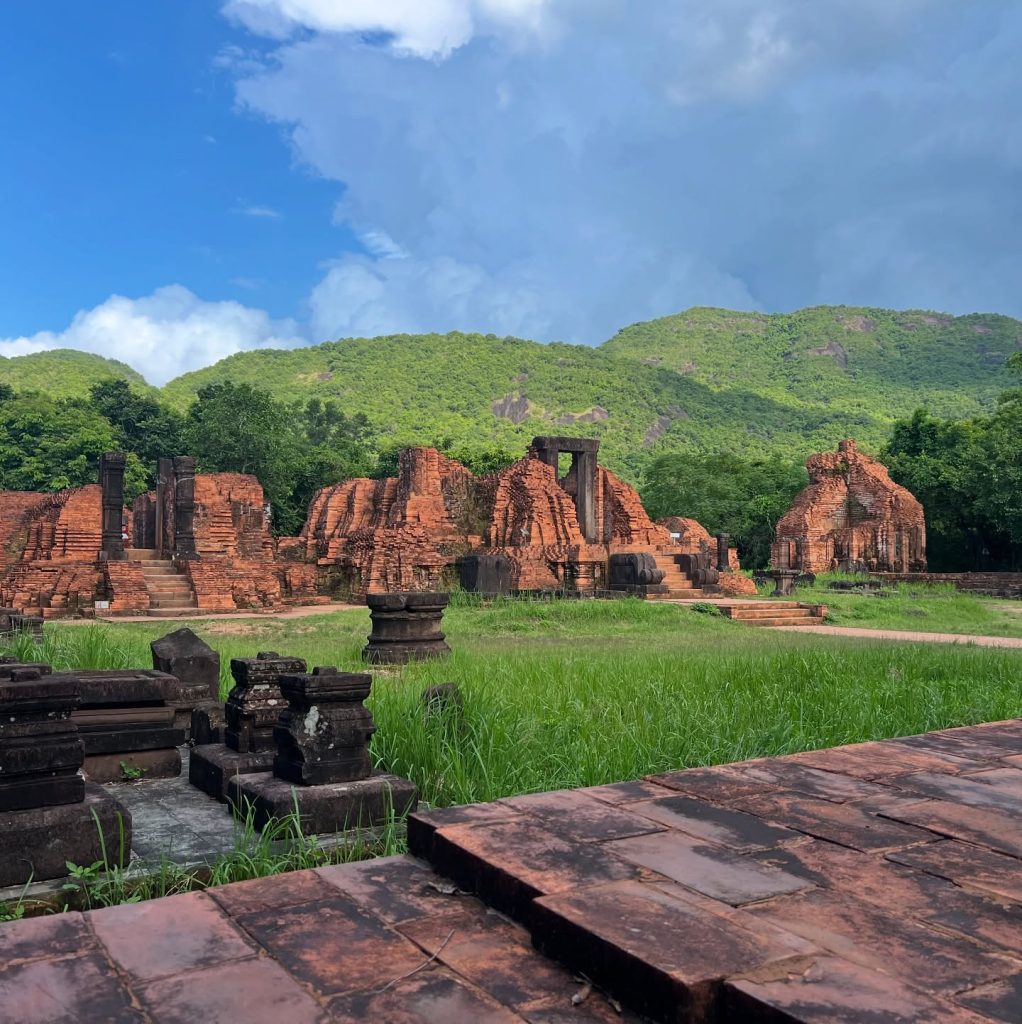
My Son is located in Duy Phú Commune, Duy Xuyên District, Quảng Nam Province, approximately:
- 40 km (1 hour drive) from Hoi An
- 70 km (1.5 hours drive) from Da Nang
- 150 km (3.5 hours drive) from Hue
Tucked inside a small valley surrounded by two mountain ranges, My Son feels hidden and mystical, which adds to its charm. The sanctuary is accessible by car, motorbike, or organized tours from Hội An and Đà Nẵng. Many visitors combine it with a day trip that includes Hội An Ancient Town, Marble Mountains, or Thu Bồn River.
History: The Spiritual Heart of Champa Civilization
My Son was once the religious and political capital of the Champa Kingdom, which flourished between the 4th and 13th centuries. The Cham people, of Austronesian origin, established a strong maritime kingdom that stretched along Vietnam’s central coast.
Dedicated mainly to Hindu worship, My Son was considered the spiritual center of the Cham kings. The temples were built to honor Shiva, the Hindu god of destruction and creation, often represented through the lingam-yoni symbol. Over nearly ten centuries, successive Cham kings expanded and rebuilt the sanctuary, creating a complex of more than 70 temples and towers.
Unfortunately, much of the site was damaged during wars and natural erosion, but around 20 structures remain relatively intact. Despite this, My Son’s architecture, intricate carvings, and historical value led UNESCO to recognize it as a World Heritage Site in 1999. Today, it stands as a fascinating reminder of the fusion between indigenous Cham culture and Indian Hindu influence.
Best Time to Visit My Son Sanctuary
The best months to explore My Son are:
- February – April: Cool and dry season, comfortable temperatures.
- August – October: Pleasant weather after the summer heat.
Avoid September to November, when central Vietnam often experiences heavy rains and flooding, and June to August, which can be hot and humid.
Pro Tip: Visit early in the morning (7:00–9:00 AM) to enjoy cooler weather, fewer crowds, and the mystical beauty of sunlight streaming through the ruins.
What to See at My Son Sanctuary
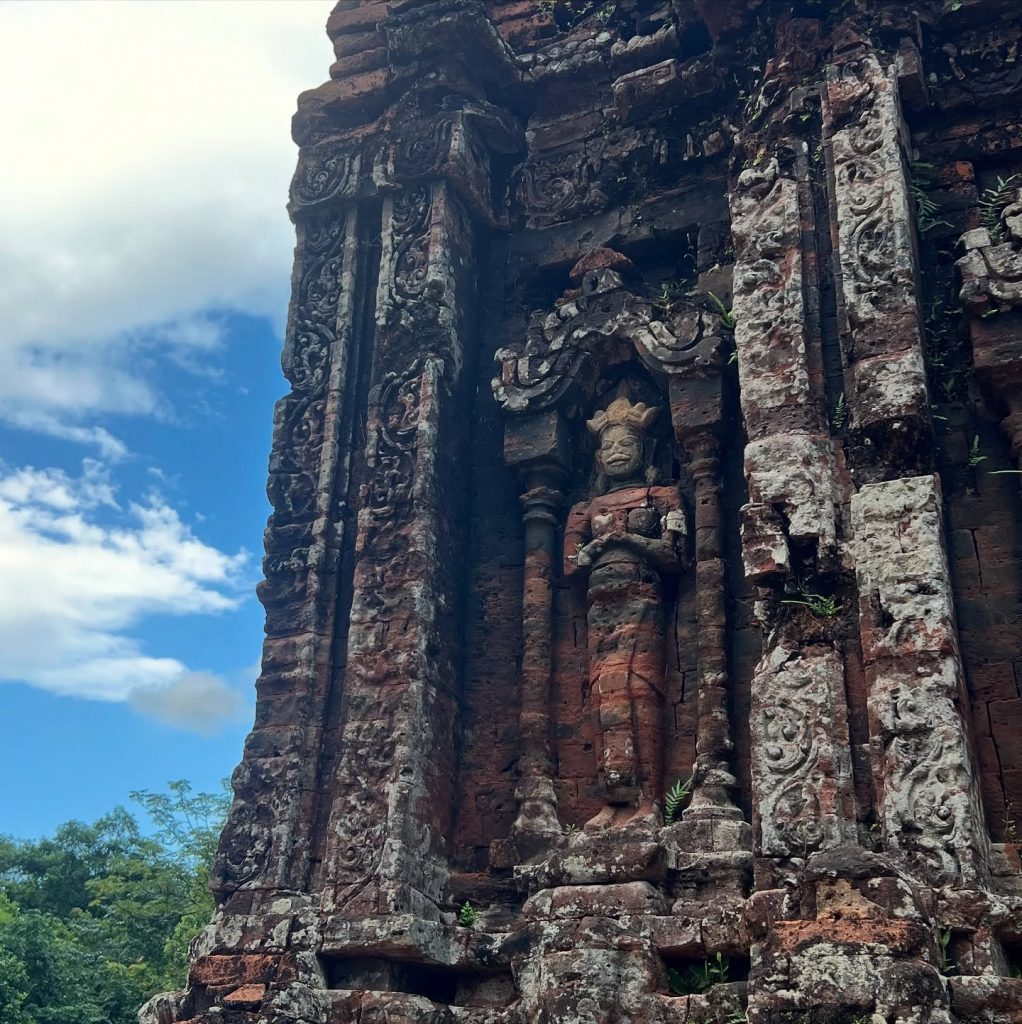
1. Ancient Cham Temples
The sanctuary once held over 70 temples and towers, grouped into different clusters (A, B, C, D, E, F, G, H, K). Each reflects different stages of Champa architecture:
- Group B & C: Some of the oldest and most important temples, dedicated to Shiva.
- Group G: Features tall towers with elaborate carvings.
- Group D: Houses a small but beautifully preserved shrine.
2. Red-Brick Architecture
My Son’s temples were constructed without mortar, using a unique technique where bricks fused tightly together. The reddish-brown color, moss-covered surfaces, and weathered look give them a mystical aura.
3. Intricate Carvings
The sandstone carvings depict Hindu gods, celestial dancers (apsaras), sacred animals (elephants, lions), and mythological scenes. The level of detail reflects the Cham artisans’ exceptional craftsmanship.
4. Lingam and Yoni
The lingam-yoni stone altar, representing the union of male and female energy, is a central feature of Cham religious practice. Many shrines still contain these sacred objects.
5. Cham Dance Performances
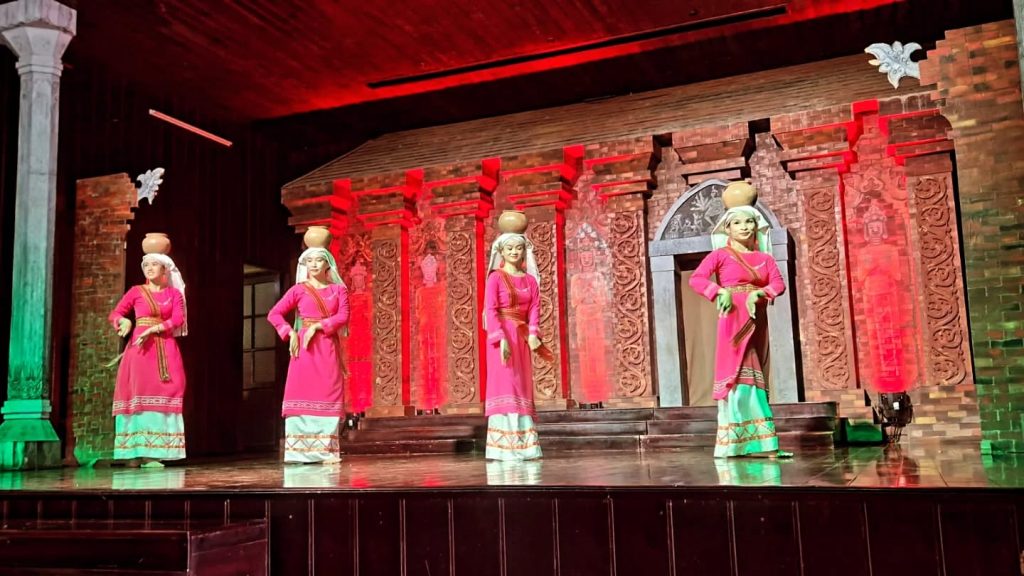
Before entering the ruins, you can watch traditional Cham dance shows performed daily. These include Apsara dances and rituals accompanied by drums and traditional instruments, offering a living connection to Cham heritage.
6. Scenic Surroundings
The sanctuary lies in a lush green valley, with streams and jungle paths adding to the sense of discovery. The combination of nature and ancient architecture makes My Son particularly photogenic.
>> Plan with tailor made Vietnam tour tool to include My Son sanctuary in your trip!
How to Get to My Son Sanctuary
From Hội An
- By Car/Taxi: ~1 hour, convenient and comfortable.
- By Motorbike: Popular with backpackers; scenic route through villages and rice paddies.
- By Tour Bus: Many agencies in Hội An offer half-day or full-day My Son tours with guides.
From Đà Nẵng
- By Private Car: ~1.5 hours, best for families or groups.
- By Motorbike: Adventurous option with great coastal scenery.
- By Guided Tour: Combines My Son with Hội An or Marble Mountains.
Entrance Fee & Opening Hours
- Entrance Fee: ~150,000 VND (about USD $6.5) per adult
- Opening Hours: 6:00 AM – 5:00 PM daily
- Includes access to the sanctuary, the museum, and Cham dance performances.
Travel Tips for Visiting My Son
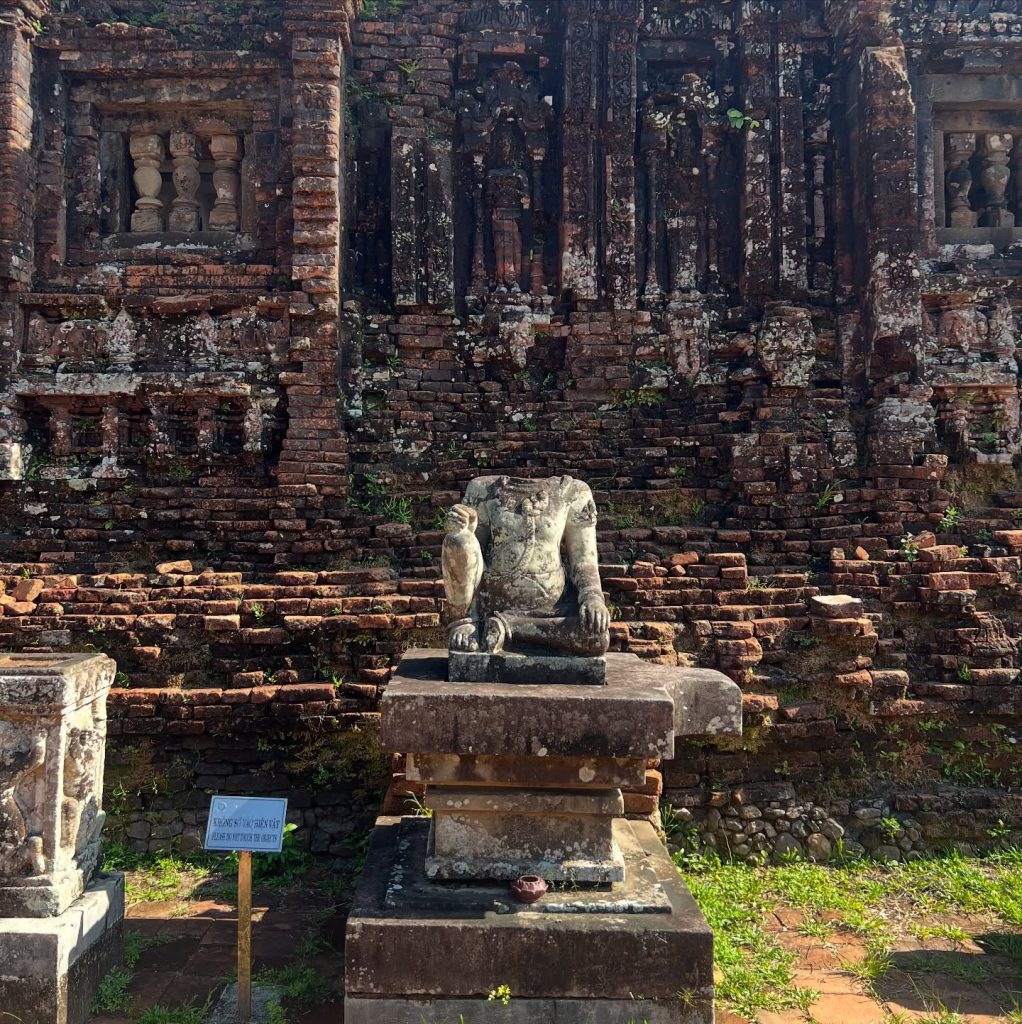
- Arrive early to avoid the midday heat and tourist crowds.
- Wear comfortable shoes as you’ll be walking along uneven paths.
- Bring water and sunscreen since shade is limited.
- Hire a local guide to fully understand the symbolism, history, and architecture.
- Combine with other attractions: Many visitors pair My Son with Hội An Ancient Town, Marble Mountains, or a Thu Bồn River cruise.
- Photography tip: Morning sunlight and late afternoon provide the best lighting for capturing the mystical ruins.
What to Eat Nearby
While My Son itself doesn’t have many restaurants, you can enjoy local Cham-inspired and Quảng Nam specialties in the nearby villages or in Hội An, such as:
- Mì Quảng (Quảng-style noodles)
- Cao Lầu (Hoi An’s signature noodle dish)
- Bánh xèo (Vietnamese savory pancakes)
- Fresh spring rolls
Some tours also include lunch stops at local restaurants.
Why Visit My Son Sanctuary?
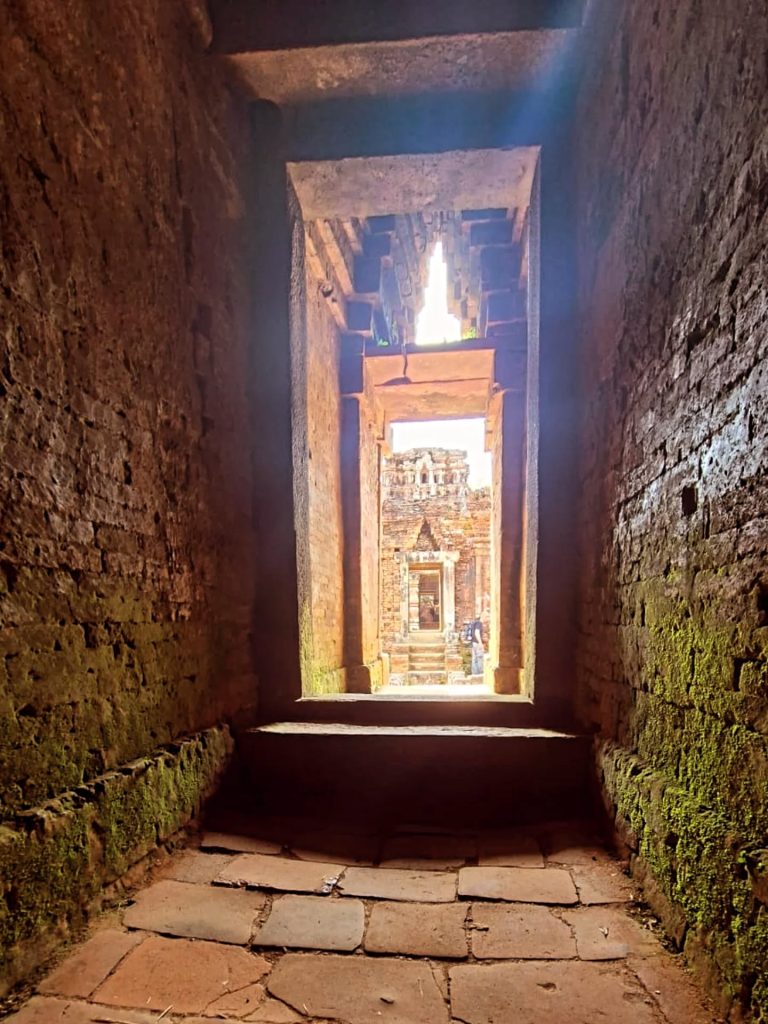
My Son is not just a set of ruins—it’s a place that tells the story of an ancient kingdom that once dominated central Vietnam. The combination of Hindu-inspired temples, mystical carvings, sacred altars, and jungle setting makes it one of Southeast Asia’s most captivating heritage sites.
It is often compared to Angkor Wat in Cambodia, though smaller in scale, but My Son offers a more intimate, tranquil atmosphere where you can truly feel connected to history.
Conclusion
A visit to My Son Sanctuary is an unforgettable journey into Vietnam’s past. From its Champa temples and sacred altars to its UNESCO recognition, this ancient site continues to fascinate travelers with its architectural beauty and spiritual significance.
Whether you’re exploring central Vietnam for culture, history, or photography, My Son is a destination you cannot miss. Pair it with Hoi An or Da Nang, and you’ll have a well-rounded experience of Vietnam’s heritage, nature, and cuisine.

